This is a preprint.
Glia control experience-dependent plasticity in an olfactory critical period
- PMID: 39005309
- PMCID: PMC11245089
- DOI: 10.1101/2024.07.05.602232
Glia control experience-dependent plasticity in an olfactory critical period
Update in
-
Glia control experience-dependent plasticity in an olfactory critical period.Elife. 2025 Jan 30;13:RP100989. doi: 10.7554/eLife.100989. Elife. 2025. PMID: 39883485 Free PMC article.
Abstract
Sensory experience during developmental critical periods has lifelong consequences for circuit function and behavior, but the molecular and cellular mechanisms through which experience causes these changes are not well understood. The Drosophila antennal lobe houses synapses between olfactory sensory neurons (OSNs) and downstream projection neurons (PNs) in stereotyped glomeruli. Many glomeruli exhibit structural plasticity in response to early-life odor exposure, indicating a general sensitivity of the fly olfactory circuitry to early sensory experience. We recently found that glia shape antennal lobe development in young adults, leading us to ask if glia also drive experience-dependent plasticity during this period. Here we define a critical period for structural and functional plasticity of OSN-PN synapses in the ethyl butyrate (EB)-sensitive glomerulus VM7. EB exposure for the first two days post-eclosion drives large-scale reductions in glomerular volume, presynapse number, and post-synaptic activity. Crucially, pruning during the critical period has long-term consequences for circuit function since both OSN-PN synapse number and spontaneous activity of PNs remain persistently decreased following early-life odor exposure. The highly conserved engulfment receptor Draper is required for this critical period plasticity as ensheathing glia upregulate Draper, invade the VM7 glomerulus, and phagocytose OSN presynaptic terminals in response to critical-period EB exposure. Loss of Draper fully suppresses the morphological and physiological consequences of critical period odor exposure, arguing that phagocytic glia engulf intact synaptic terminals. These data demonstrate experience-dependent pruning of synapses and argue that Drosophila olfactory circuitry is a powerful model for defining the function of glia in critical period plasticity.
Figures
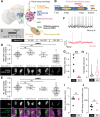
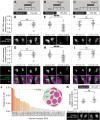
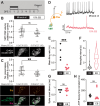
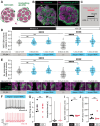
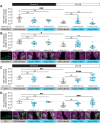


Similar articles
-
Glia control experience-dependent plasticity in an olfactory critical period.Elife. 2025 Jan 30;13:RP100989. doi: 10.7554/eLife.100989. Elife. 2025. PMID: 39883485 Free PMC article.
-
Early Draper-mediated glial refinement of neuropil architecture and synapse number in the Drosophila antennal lobe.Front Cell Neurosci. 2023 Jun 2;17:1166199. doi: 10.3389/fncel.2023.1166199. eCollection 2023. Front Cell Neurosci. 2023. PMID: 37333889 Free PMC article.
-
Activity-Dependent Remodeling of Drosophila Olfactory Sensory Neuron Brain Innervation during an Early-Life Critical Period.J Neurosci. 2019 Apr 17;39(16):2995-3012. doi: 10.1523/JNEUROSCI.2223-18.2019. Epub 2019 Feb 12. J Neurosci. 2019. PMID: 30755492 Free PMC article.
-
Neuron-to-glia and glia-to-glia signaling directs critical period experience-dependent synapse pruning.Front Cell Dev Biol. 2025 Feb 18;13:1540052. doi: 10.3389/fcell.2025.1540052. eCollection 2025. Front Cell Dev Biol. 2025. PMID: 40040788 Free PMC article. Review.
-
Developmental experience-dependent plasticity in the first synapse of the Drosophila olfactory circuit.J Neurophysiol. 2016 Dec 1;116(6):2730-2738. doi: 10.1152/jn.00616.2016. Epub 2016 Sep 28. J Neurophysiol. 2016. PMID: 27683892 Free PMC article. Review.
References
Publication types
Grants and funding
LinkOut - more resources
Full Text Sources
